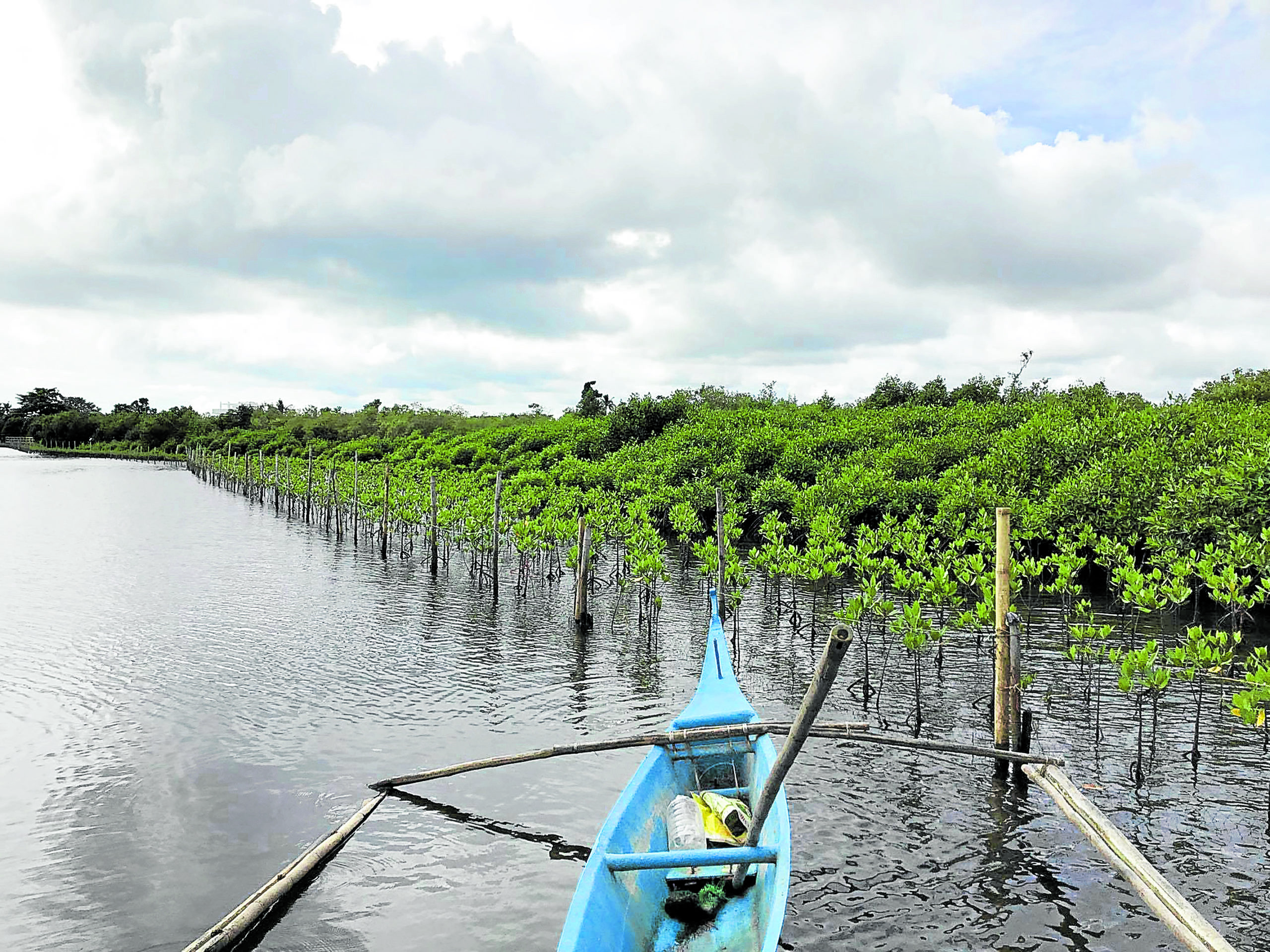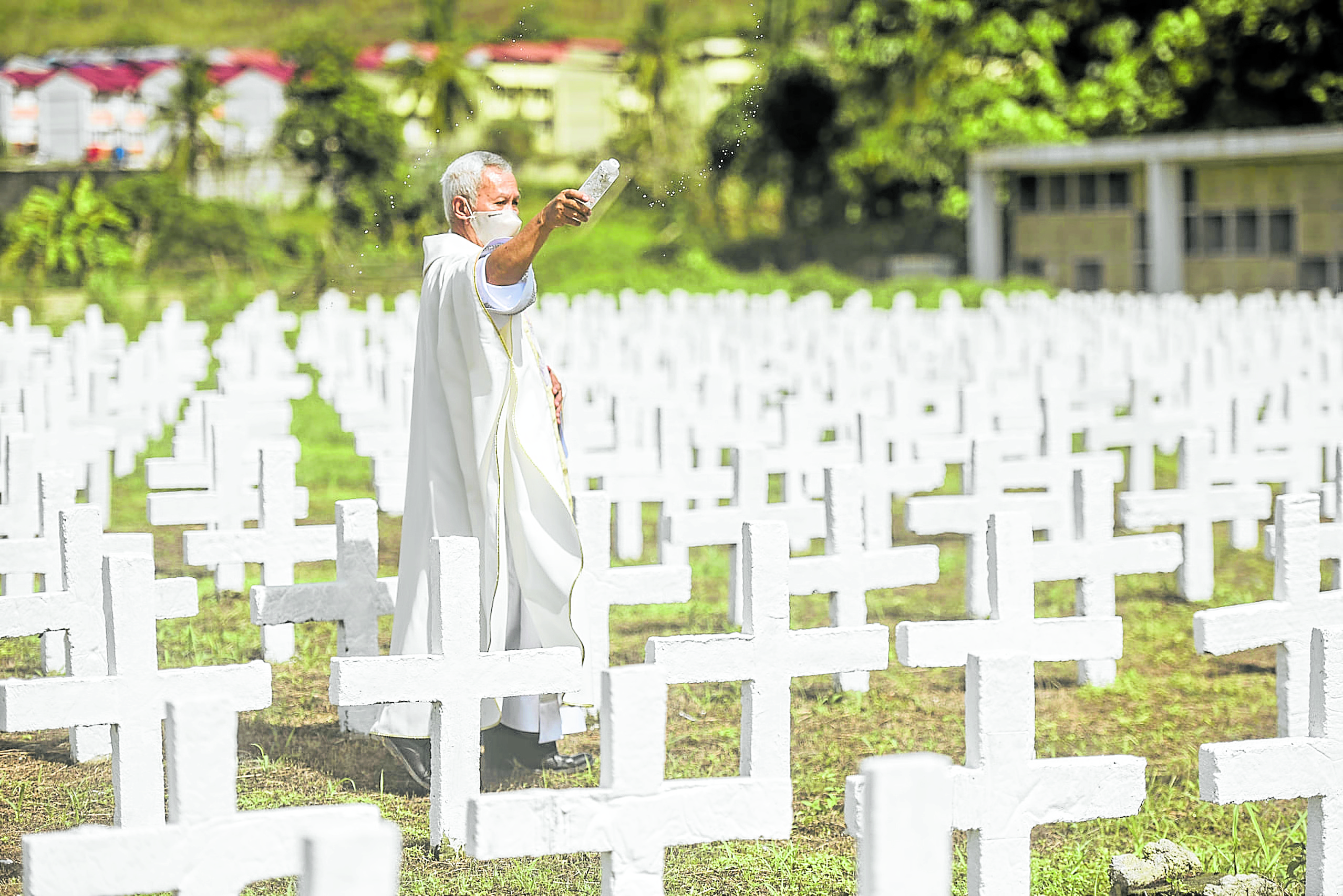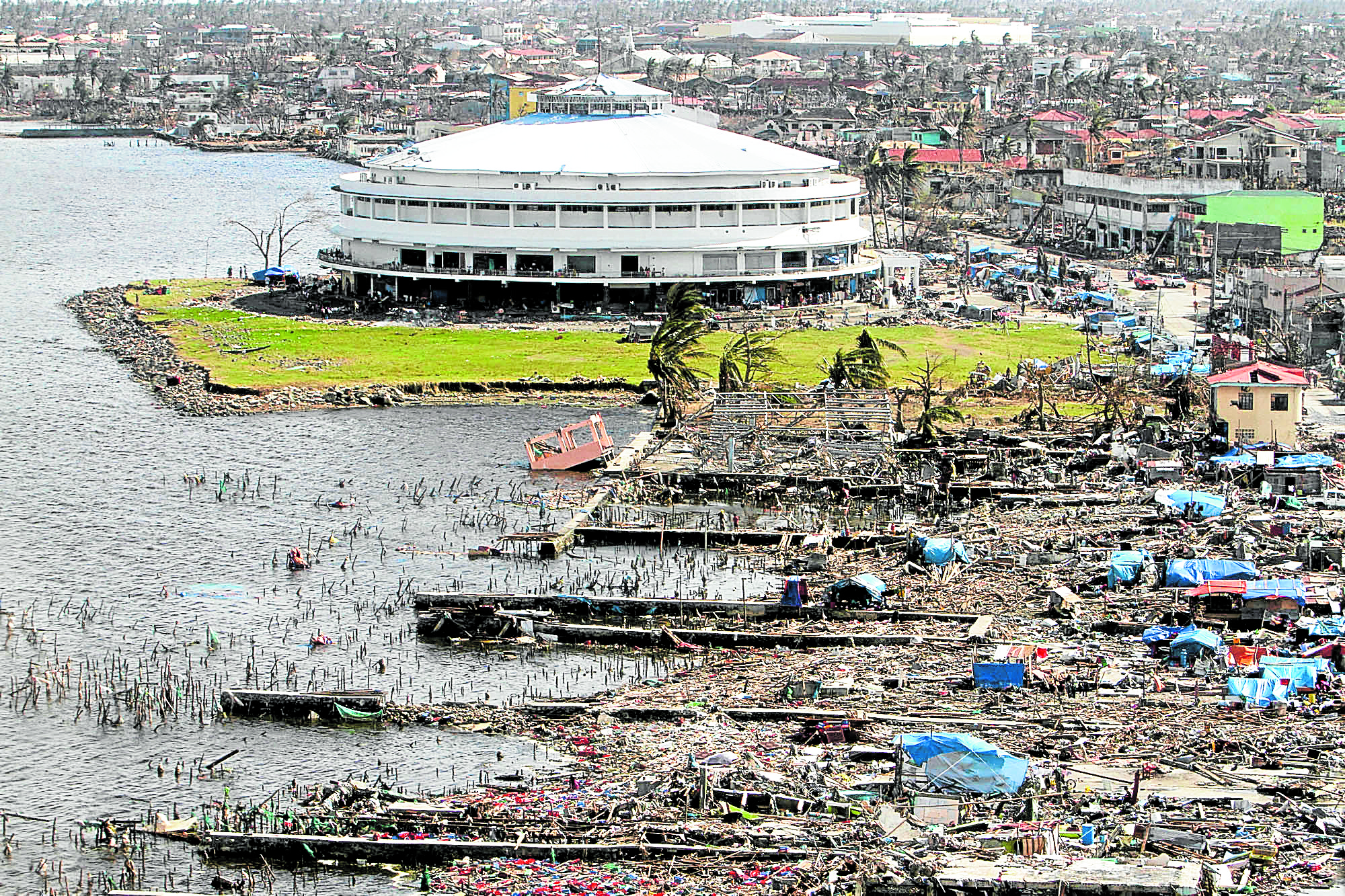Yolanda’s unlikely heroes
TACLOBAN CITY—Before this Leyte provincial capital and regional center of Eastern Visayas was battered by Supertyphoon “Yolanda” (international name: Haiyan) seven years ago, many residents had been treating their mangrove forests as just part of the landscape. Girlie Obillo, 43, a resident of San Jose District, said mangroves then were cut either for firewood or to clear the path of a passing vessel, despite the absence of a permit from the Department of Environment and Natural Resources (DENR).
Danilo Elias, 62, said it used to pain him to see how his neighbors would just cut down some of the mangroves he planted. He was among the more than 20 residents who volunteered to plant more than 500 propagules in the 1990s under a DENR program.
But things drastically changed after Yolanda, arguably the world’s strongest typhoon to hit land, struck on Nov. 8, 2013. Residents have turned fiercely protective of their mangroves that line Cancabato Bay, the biggest body of water in Leyte.

FIRST DEFENSE The mangrove forest at Cancabato Bay in San Jose District, Tacloban City, helped temper the violent storm surges whipped up by Supertyphoon “Yolanda” (international name: Haiyan) in 2013 when it pummeled the Eastern Visayas region. The mangrove patches have since been rehabilitated and protected by local communities after realizing that these are their first defense against strong typhoons that may hit their villages. —JOEY A. GABIETA
Lifesaver
In fact, they now consider these mangrove patches their “unsung heroes.”
“Our mangroves saved our lives,” said Pedro Cahindo Jr., who was a village councilor of Barangay 83 when Yolanda pummeled Tacloban and many parts of the Visayas.
“Without them, the storm surge would have been more deadly. The mangroves helped slow down the gushing of water into our houses,” he added.
Article continues after this advertisementAlthough 23 people died in Barangay 83, residents believed that many more would have been killed after Yolanda generated a deadly 20-foot storm surge from Cancabato Bay, which spans more than 15 villages before opening to Leyte Gulf.
Article continues after this advertisementThe village is part of San Jose District, the worst-hit area in the city during Yolanda’s onslaught. While the mangroves helped temper Yolanda’s violent storm surges, almost 80 percent of the mangrove trees in the area did not survive the onslaught.
Two years after the disaster, villagers started rehabilitating the mangrove forest.
A group of 28 men and women of Barangay 83 removed the dead mangroves and began planting 3,000 propagules. They were supported by the DENR and the international group Organization for Industrial Spiritual and Cultural Advancement International.
“We are thankful to these mangroves and there is no way for us not to rehabilitate our mangrove forest knowing that these will save us again from a natural calamity, like typhoons,” Cahindo said.
Five years later, the mangrove forest has expanded from 4 hectares to more than 7 ha. The area now teems with fish, crabs and other marine resources.
More than 70,000 mangroves trees are now standing along the coastline, forming a natural barrier against floods and storm surges.
“Our people here are aware of the [importance] of our mangrove forest. It not only protects us from a typhoon but it preserves our marine resources, like fish and crabs now thriving there,” Cahindo said.
Obillo said: “Why would we destroy something that protects us from a calamity?”
Elias said residents learned to value their mangroves after they survived Yolanda’s massive floods.

WASTELAND Tacloban City (top), in this photo taken seven years ago, has turned into a wasteland after Supertyphoon “Yolanda” battered Eastern Visayas. Today, the Yolanda Shipwreck Memorial Park in Anibong District reminds residents of the fury of one of the world’s strongest typhoons and how Tacloban rose from the tragedy. —INQUIRER FILE PHOTO AND JOEY A. GABIETA
Disaster management
“That is why, they don’t cut any of our mangroves here. They are helping us protect the mangroves as they know that mangroves help mitigate the impact of flooding brought by typhoon,” he added.
The community has also crafted its own disaster management plan so it will be ready for any disaster. Under the plan, owners of big and sturdy houses have agreed to accommodate evacuees, especially families whose homes were not strong enough to withstand strong wind and heavy rains.
“Most of the villagers have reconstructed their houses up to a second level as a way to avoid storm surges or floods,” Cahindo said. “We know now what to do during a disaster or a typhoon. Yolanda just taught us a lesson to protect our ecosystem.”
Several scientists and experts have said Yolanda was a climate change-induced typhoon that claimed more than 6,000 lives, affected 4.1 million people, and damaged more than a million homes, mostly in Eastern Visayas.
In Tacloban alone, considered ground zero of the supertyphoon, more than 2,200 people were confirmed to have died, turning the once bustling city into a wasteland seven years ago.

REMEMBERING More than 2,000 people died in Tacloban City during Yolanda’s onslaught. On Nov. 8, the city government offered a Mass at the mass grave for victims of the supertyphoon in Barangay Basper during the commemoration of the 2013 disaster. —PHOTO COURTESY OF TACLOBAN CITY INFORMATION OFFICE
Paying respects
Last week, Tacloban held a simple commemoration of the tragedy, with Masses for victims at a mass burial site in Barangay Basper and at the Yolanda Shipwreck Memorial Park in Barangay 68, where a commercial cargo, the MV Jocelyn, was pushed inland by the storm surge.
Church bells pealed as a signal for people to light candles at their doorsteps or along the streets to honor and pay respects to the victims of Yolanda.
Mayor Alfred Romualdez said: “I ask residents not to forget Yolanda. If there is a super storm, evacuate immediately.”
Other Yolanda-stricken areas in Eastern Visayas canceled their programs marking the tragedy this year due to health restrictions amid the coronavirus pandemic.
Mayor Annaliza Gonzales-Kwan of Guiuan town in Eastern Samar province also offered a Mass for the victims. It was in Guiuan where Yolanda made its first landfall, killing more than 100 people.
Kwan said Yolanda had taught Guiuan residents to monitor weather forecasts and not to wait for the government to order an evacuation whenever the town was threatened by a typhoon.
“If there is a need, they themselves evacuate from their homes to safer places. The people of Guiuan have learned their lesson after Yolanda,” Kwan said.
